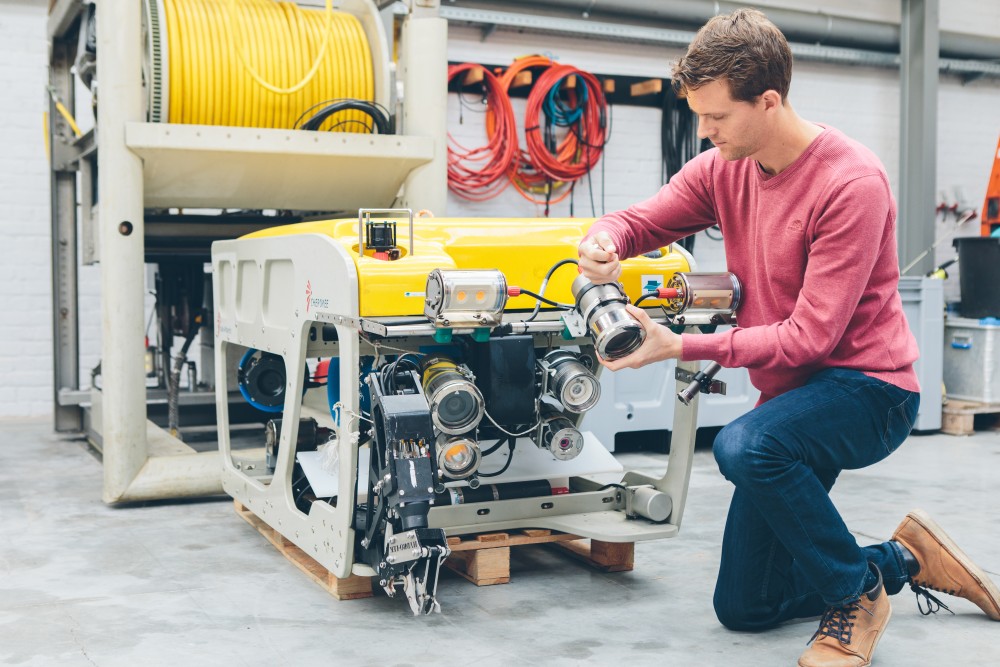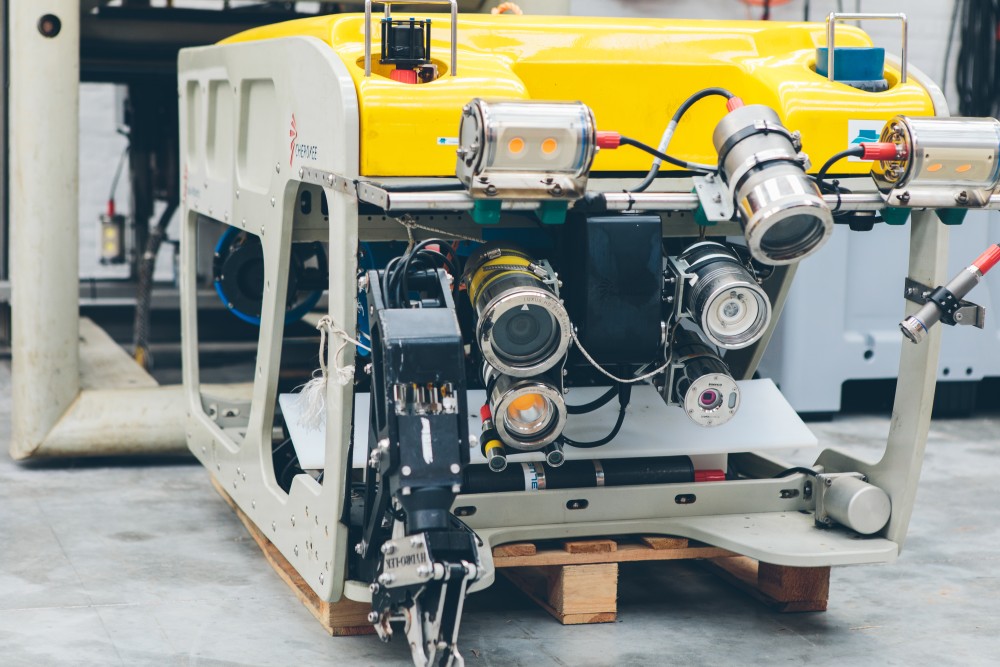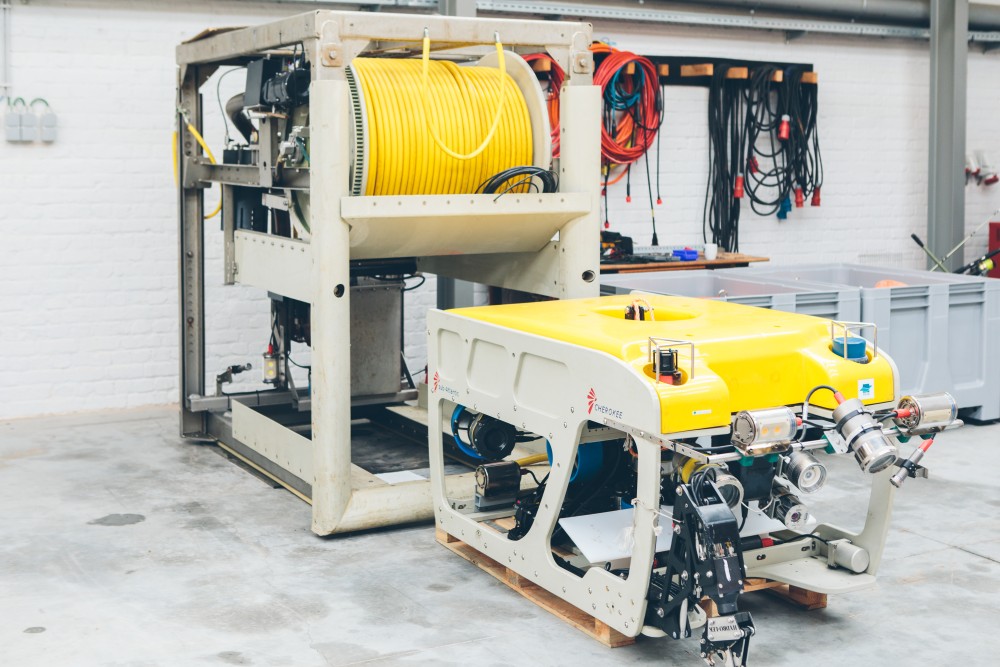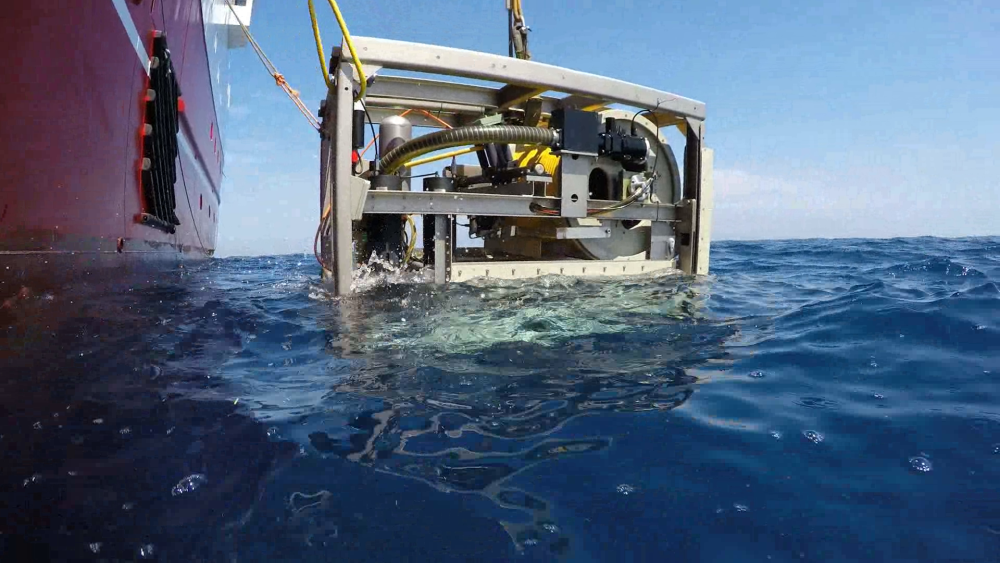A Remotely Operated Vehicle (ROV) is an underwater vehicle that is connected to and controlled by operators on the surface. ROV Zonnebloem – formerly known as ROV Genesis* – can dive to a depth of 1300 m. The ROV is mainly used for deep-sea research to explore the largely unknown deep-ocean margins and their biodiversity. Zonnebloem has been deployed in 30 international campaigns all over the world to inspect, and take samples of deep-sea canyons, cold-water coral reefs, carbonate mounds, mud volcanoes, cold seeps, etc.
The compact ROV Zonnebloem is equipped with a Tether Management System (TMS). The TMS is the cradle where in the ROV is lowered to and lifted from the seafloor and acts as the home base for the ROV once it reaches its sampling site. The ROV controller, or pilot, follows every action on screens from a control room – a container mounted on the research vessel.
The vehicle is equipped with several lights, with both colortake and high-resolution video and picture cameras that color take can film and take pictures, as with a laser measuring system. The depth, course, height, swell and slope are continuously registered, as are the temperature and salinity of the water. A hydraulic working arm can perform simple samplings or taking small bottom cores and allows the ROV to assist other underwater machinery.
Development on the ROV has been discontinued, and the MRC is no longer utilizing the ROV Zonnebloem.
* The ROV has been operational since 2006 under its former name Genesis. The ROV and accompanying equipment were purchased by Ghent University and put into use by the Renard Centre for Marine Geology and the Marine Biology Section. In 2012 Ghent University donated ROV Genesis to VLIZ, which ensures the management and the operations of the ROV. On the occasion of the official launch of the VLIZ Marine Robotics Center in September 2019, the ROV Genesis was renamed as ROV Zonnebloem.
Technical details:
- ROV Physical dimensions
- Length: 1.4 m
- Width: 1 m
- Height: 1.1 m
- Weight: ~300 kg
- TMS Physical dimensions
- Length: 2 m
- Width: 1.2 m
- Height: 2.4 m
- Weight: ~700 kg
- Total combined system weight: 1500 kg
- Operational Parameters
- Operating depth: 1300m
- 4 thrusters
- Data overlay in video feed
- Scientific payload
- HD Camera with lasers
- SD camera's (4)
- Blueview acoustic camera
- Coring system
- CTD



